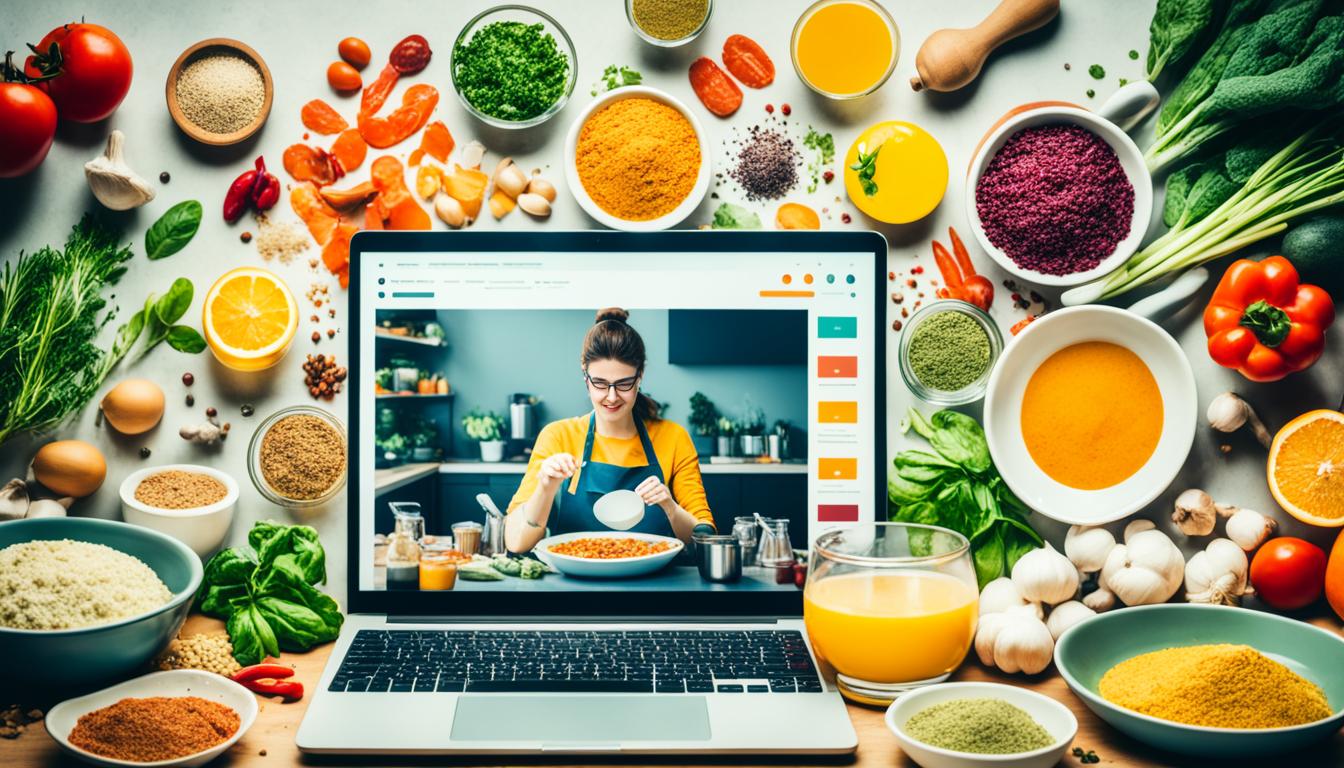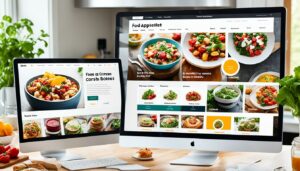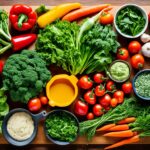Did you know that 93% of food bloggers regularly share recipes from other sources on their blogs? This surprising statistic highlights the common practice of incorporating diverse recipes into blog content. It’s a fantastic way to provide variety to your readers and showcase your cooking skills. However, before you start sharing those mouth-watering recipes, it’s crucial to understand the copyright laws surrounding recipe use. Let’s explore the do’s and don’ts of using other people’s recipes on your blog.
Contents
- 1 The Importance of Proper Recipe Sharing
- 2 Understanding Copyright Law and Recipes
- 3 Proper Use of Photos in Recipe Sharing
- 4 Guidelines for Sharing Ingredient Lists
- 5 Adapting and Giving Credit
- 6 Ethical Sharing on Social Media
- 7 Best Practices for Sharing on Facebook, Pinterest, and Twitter
- 8 Proper Recipe Sharing on Other Social Media Platforms
- 9 Maintaining Originality in Your Blog
- 10 Conclusion
- 11 FAQ
- 11.1 Can I use other people’s recipes on my blog?
- 11.2 How can I share others’ recipes on my blog legally?
- 11.3 Do recipes have copyright protection?
- 11.4 How can I use recipe photos from other blogs?
- 11.5 Can I share just the ingredient list from someone else’s recipe?
- 11.6 Can I adapt someone’s recipe and publish it on my blog?
- 11.7 What is the proper etiquette for sharing recipes on social media?
- 11.8 How should I share recipes on Facebook, Pinterest, and Twitter?
- 11.9 Can I share recipes on other social media platforms?
- 11.10 How can I maintain my originality while sharing others’ recipes?
- 11.11 What is the importance of staying compliant with copyright laws when sharing recipes on blogs?
- 12 Source Links
Key Takeaways:
- Sharing recipes from other sources can add variety and appeal to your blog content.
- Understanding copyright laws and obtaining permission when necessary is essential.
- Proper attribution is crucial to avoid plagiarism and maintain a positive reputation.
- Ingredient lists are not subject to copyright, but providing attribution is still important.
- Adapting recipes requires substantial changes and proper credit to the original source.
The Importance of Proper Recipe Sharing
When sharing others’ recipes on your blog, it is essential to prioritize proper recipe attribution and avoid any plagiarism concerns. Respecting the original source and giving credit where it’s due not only demonstrates ethical conduct but also protects you from legal repercussions. By following these guidelines, you can share others’ recipes on your blog responsibly and maintain a positive reputation within the blogging community.
Recipe Attribution on Your Blog
Recipe attribution refers to acknowledging the original creator of a recipe and providing proper credit on your blog. This involves mentioning the source of the recipe, whether it’s a specific blog, cookbook, or website, and potentially linking back to the original recipe. Including the recipe author’s name and any relevant information about the source can enhance the transparency and credibility of your blog.
Proper attribution is not only about complying with copyright laws but also about fostering a supportive and respectful community of bloggers and content creators.
Avoiding Plagiarism with Recipes on Your Blog
Plagiarism is a serious offense in the blogging world and can tarnish your reputation. It is crucial to understand that copying someone else’s recipe without permission or proper attribution is considered plagiarism. Instead, aim to put your unique spin on shared recipes by adding your own commentary, adaptations, or personal experiences. This will ensure that your content remains original and valuable to your readers.
Sharing others’ recipes on your blog is generally permissible as long as you follow the principles of proper recipe attribution, obtain necessary permissions, and comply with copyright laws. Nevertheless, it’s prudent to exercise caution and verify the original author’s preferences regarding their recipes’ utilization. Some bloggers may have specific guidelines, such as requesting permission or limiting the amount of content they allow to be shared.
By adhering to these practices, you can confidently share others’ recipes on your blog while respecting the intellectual property rights of content creators. Building a reputation for ethical recipe sharing not only establishes your credibility as a blogger but also encourages a supportive community where ideas and inspiration can flourish.
Understanding Copyright Law and Recipes
According to copyright law, a list of ingredients cannot be copyrighted. However, the expression of a recipe, including explanations, directions, and accompanying text, may be subject to copyright protection. As a blogger, it’s important to understand the distinction and ensure that you’re using recipes in a way that respects copyright laws.
This means that while you can freely use the list of ingredients from a recipe, you should be cautious when using the instructions or any additional text provided. It’s always best to create your own instructions or adapt them significantly to avoid any copyright infringement.
Remember, bloggers work hard to develop their unique recipes and it’s essential to respect their intellectual property. By understanding recipe copyright guidelines, you can ensure that you’re utilizing recipes on your blog in a legal and ethical manner.
Proper Use of Photos in Recipe Sharing
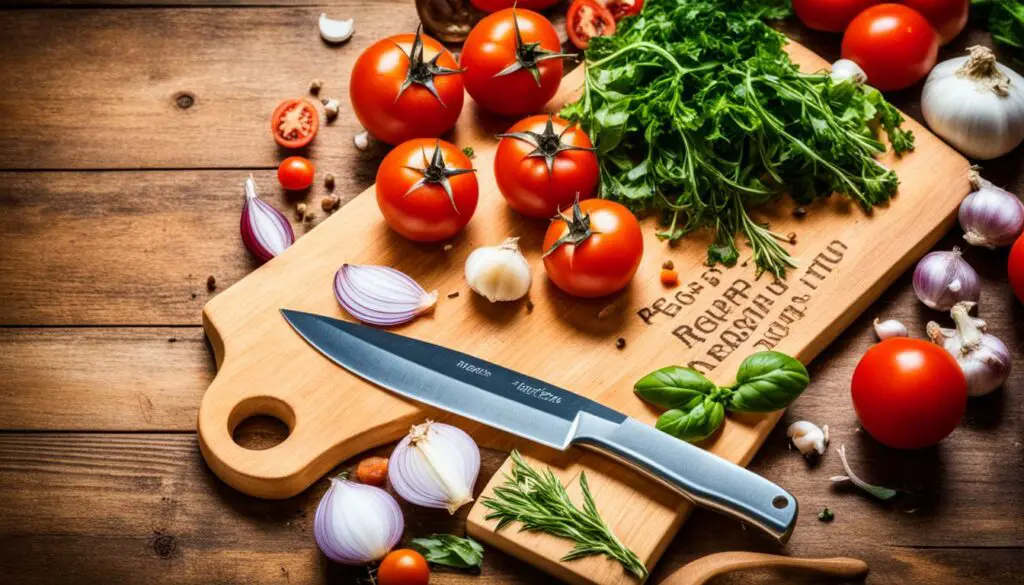
When it comes to sharing someone else’s recipe on your blog, it’s crucial to consider the proper use of any accompanying photos. While the focus may primarily be on the recipe itself, the inclusion of appealing visuals can enhance the overall experience for your readers. However, it’s important to respect photo copyrights and adhere to proper attribution practices.
Some bloggers may allow their recipe photos to be used on other platforms, provided that proper credit is given. This means including a clear and visible attribution to the original source, ensuring that readers can easily identify where the photo originated from. It’s also important to avoid any alterations to the photo without explicit permission from the copyright holder.
When using photos from other sites, it’s essential to review the original source’s photo use policy. Some bloggers may have specific guidelines or preferences regarding the use of their photos. Some bloggers may only grant permission for non-commercial use, while others may require prior approval before using their photos. Respecting these guidelines ensures that you are using the photos in a way that aligns with the content creator’s wishes.
Obtaining permission is especially crucial if you plan to use the recipe photos for commercial purposes or if you want to make any modifications to the images. It’s always best to reach out to the content creator directly and request permission if you have any doubts or concerns about the appropriate use of their photos.
Recipe Photo Copyright and Attribution
When attributing recipe photos, it’s important to clearly indicate the original source and the copyright holder. This helps to acknowledge the hard work and creativity of the photographer while maintaining transparency with your readers.
Example of proper photo attribution:
Photo by [Photographer Name] from [Source Name]
Displaying photo attributions prominently, such as below the photo or in a separate caption, ensures that readers can easily associate the image with its original source. It’s important to avoid burying or hiding the attribution within the blog post, as this can be misleading and may not comply with proper attribution practices.
By respecting recipe photo copyrights and providing proper attribution, you can build positive relationships within the blogging community while showcasing beautiful visuals on your blog.
Visual elements play a significant role in recipe sharing, captivating readers and inspiring them to try new dishes. However, it’s crucial to use photos responsibly, respecting the copyright holders’ rights and maintaining proper attribution throughout your blog.
Guidelines for Sharing Ingredient Lists
When it comes to sharing recipes, one of the key elements is the ingredient list. While ingredient lists are not subject to copyright protection, it’s still crucial to use them responsibly on your blog. Here are some guidelines to keep in mind when including ingredient lists in your recipe posts:
- Copy and paste: When sharing a recipe, you can copy and paste the ingredient list from the original source onto your blog. This helps ensure accuracy and consistency.
- Provide proper attribution: It’s important to give credit to the original source of the recipe. Include the name of the website, blog, or cookbook where you found the recipe. This not only demonstrates respect for the creator but also allows readers to access the full directions and any additional notes or tips provided.
- Link back: Alongside the ingredient list, provide a link back to the original recipe. This allows readers to visit the source for the complete recipe, giving credit to the creator and directing traffic to their website or blog.
Remember, although the ingredient list itself may not be copyrighted, it’s essential to use it in a way that acknowledges the original source and respects the effort put into creating the recipe. By following these guidelines, you can confidently share ingredient lists and create a positive experience for your readers.
“By giving proper attribution and linking back to the original recipe, you acknowledge the hard work of other bloggers and content creators.”
Adapting and Giving Credit
When sharing recipes on your blog, you might come across a recipe that you’d like to adapt and make it your own. It’s important to remember that simply swapping out a few ingredients or measurements is not enough to claim the recipe as your own. To properly adapt a recipe and give credit where it’s due, follow these guidelines:
Making Substantial Changes
To ensure that your adapted recipe stands out as a unique creation, it’s crucial to make substantial changes to the original recipe. Consider modifying the cooking technique, adding or removing ingredients, or experimenting with different flavor combinations. By putting your own spin on the recipe, you demonstrate creativity and originality.
Indicating it’s an Adaptation
When publishing the adapted recipe on your blog, it’s essential to clearly indicate that it is an adaptation of someone else’s recipe. This not only avoids misunderstandings but also gives the original recipe creator the recognition they deserve.
You can use phrases like “Adapted from [Original Source]” or “[Your Blog Name’s] Adaptation of [Original Recipe Title]” to clearly communicate that the recipe is a modified version. Including this information upfront provides transparency to your readers and shows respect for the original creator.
Giving Proper Credit
While adapting a recipe, it’s important to give proper credit to the original source. This can be done by acknowledging the original recipe creator in your blog post or recipe introduction. You can mention their name, blog name, or provide a direct link to the original recipe. By giving credit, you show appreciation for their work and encourage others to explore their content.
| Original Source | Credit Statement Example |
|---|---|
| DeliciousDishes.com | This recipe is an adaptation of a recipe originally created by Sarah from DeliciousDishes.com. |
| FoodieFinds.net | Special thanks to Foodie Finds for inspiring this adapted recipe. You can find the original recipe here. |
By following these guidelines, you can ethically adapt recipes while giving credit to the original creators. Remember, recipe adaptation is an opportunity to showcase your unique culinary skills and inspire others while acknowledging the hard work of fellow food bloggers.
Ethical Sharing on Social Media
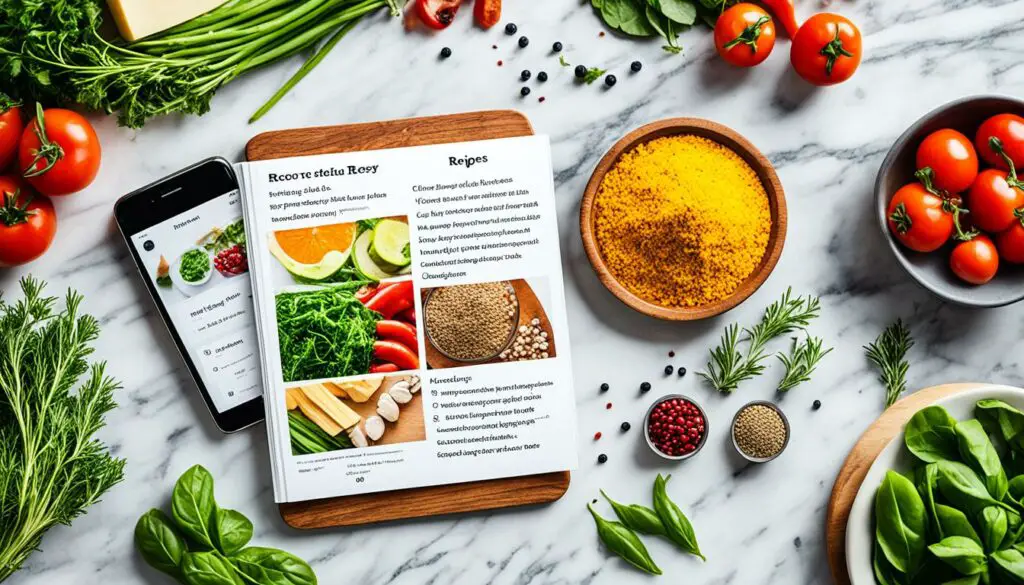
Social media platforms provide a convenient and widespread means of sharing recipes with a wide audience. However, it is crucial to adhere to proper recipe sharing etiquette to respect copyright laws and support the original content creators. By following these guidelines, you can engage with the online food community while maintaining ethical practices.
Avoid Sharing Full Recipes
When sharing recipes on social media, it is best to avoid posting the entire recipe. Instead, provide a teaser or a brief description along with a link back to the original source. This approach encourages readers to visit the blogger’s website, giving them the opportunity to explore the full recipe and discover other valuable content.
Not only does this practice respect the intellectual property of the blogger, but it also helps support their work. Bloggers invest significant time and effort into developing and sharing their original recipes and content, and driving traffic to their websites allows them to sustain their work.
Proper Attribution Matters
When sharing a recipe from another source on social media, always ensure that proper attribution is given. Include the name of the original blogger or website along with a link to the specific blog post or recipe page.
For example: “Check out this delicious recipe for Lemon Blueberry Muffins by Katie’s Kitchen! [link]”
By acknowledging and respecting the original content creators, you contribute to the integrity of the blogging community and foster a culture of collaboration.
Engage with the Food Community
Engaging with the online food community goes beyond simply sharing recipes. Take the time to interact with bloggers and fellow food enthusiasts by leaving comments, asking questions, and sharing your own experiences with the recipes you try.
Additionally, consider joining or participating in food-related groups or communities on social media platforms. These spaces provide valuable opportunities to learn, share ideas, and connect with like-minded individuals who share a passion for cooking and exploring new flavors.
Be Mindful of Copyright
When sharing recipes on social media, it is essential to be mindful of copyright laws. Respect the rights of content creators by always seeking permission before reposting or republishing their recipes.
Remember: original content creators have the right to decide how their work is shared and distributed. By obtaining permission, you ensure that you are acting within legal boundaries and maintaining ethical standards.
By embracing proper recipe sharing etiquette on social media, you contribute to a thriving and supportive online food community. Respect copyright laws, provide proper attribution, and engage with others in a meaningful way. Together, we can celebrate the joy of cooking and sharing delicious recipes while honoring the hard work of content creators.
Best Practices for Sharing on Facebook, Pinterest, and Twitter
Each social media platform has its own guidelines for sharing content. When it comes to sharing recipes on Facebook, it’s best to copy and paste a link rather than sharing the full recipe. This ensures that the original source receives proper credit and traffic. By linking back to the original recipe, you not only respect the hard work of the content creator but also provide your audience with access to the full instructions.
Pinterest is a popular platform for sharing recipes, and it’s important to use the website’s pin button when pinning recipes. Avoid copying any recipe content into the pin’s description, as this may violate copyright laws and etiquette. Instead, let the pin’s image showcase the recipe, and use the pin’s link to direct users to the original source. This way, you give proper attribution and encourage traffic to the blogger who created the recipe.
Twitter is known for its short and snappy posts, making it ideal for sharing recipe blurbs and links. When sharing recipes on Twitter, craft a catchy blurb that entices your audience. Remember to include the link to the original recipe, so your followers can access the complete instructions. Sharing recipes with a brief description and a link allows you to engage your audience without overwhelming their Twitter feed.
Utilizing these best practices for sharing recipes on Facebook, Pinterest, and Twitter ensures that you respect copyright laws, provide proper attribution, and support content creators. By following the guidelines of each platform, you can share recipes responsibly and maintain a positive online presence.
Proper Recipe Sharing on Other Social Media Platforms
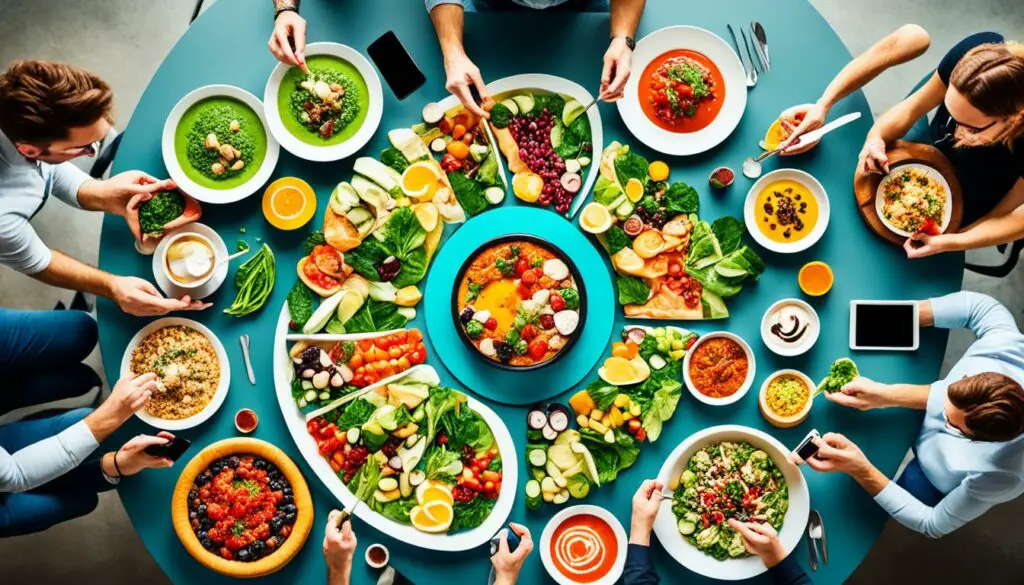
Apart from Facebook, Pinterest, and Twitter, there are numerous other social media platforms where you may want to share recipes. Whether you’re posting on Instagram, Snapchat, or even TikTok, it’s important to follow proper etiquette and respect the rights of content creators.
When sharing recipes on social media accounts, always remember to provide a link back to the original recipe. This ensures that bloggers receive proper credit and allows readers to access the full instructions and details. By sharing recipes responsibly, you not only support the hard work of others but also maintain a positive reputation within the blogging community.
Sharing recipes online is an excellent way to inspire others and connect with fellow food enthusiasts. However, it’s crucial to uphold the integrity of the original content and avoid any copyright infringement. Let’s continue exploring best practices for recipe sharing, ensuring that bloggers and creators receive the recognition they deserve.
Tips for Sharing Recipes on Other Social Media Platforms
Every social media platform has its own unique features and guidelines for content sharing. Consider these tips when sharing recipes on popular social media platforms:
- Instagram: Create visually appealing recipe posts with high-quality photos. Provide a brief introduction or tease of the recipe in your caption and direct users to the link in your bio for the full details.
- Snapchat: Use short recipe videos or images to engage your audience. You can share snippets of the recipe process to generate interest and direct users to your blog or website for the full recipe.
- TikTok: Take advantage of TikTok’s short-form video format to showcase quick and easy recipes. Provide a link to the full recipe in the video description or comments section.
- LinkedIn: Share recipes that align with your professional niche. Add value by offering insights or tips related to the recipe and include a link to the full recipe on your blog or website.
- YouTube: Create engaging recipe videos that provide step-by-step instructions. Include a link to the full recipe in the video description or direct viewers to your blog for additional details.
Remember, regardless of the social media platform you choose, the goal is to provide value to your audience while respecting the work of other content creators. Share recipes responsibly, give credit where it’s due, and always link back to the original source.
Maintaining Originality in Your Blog
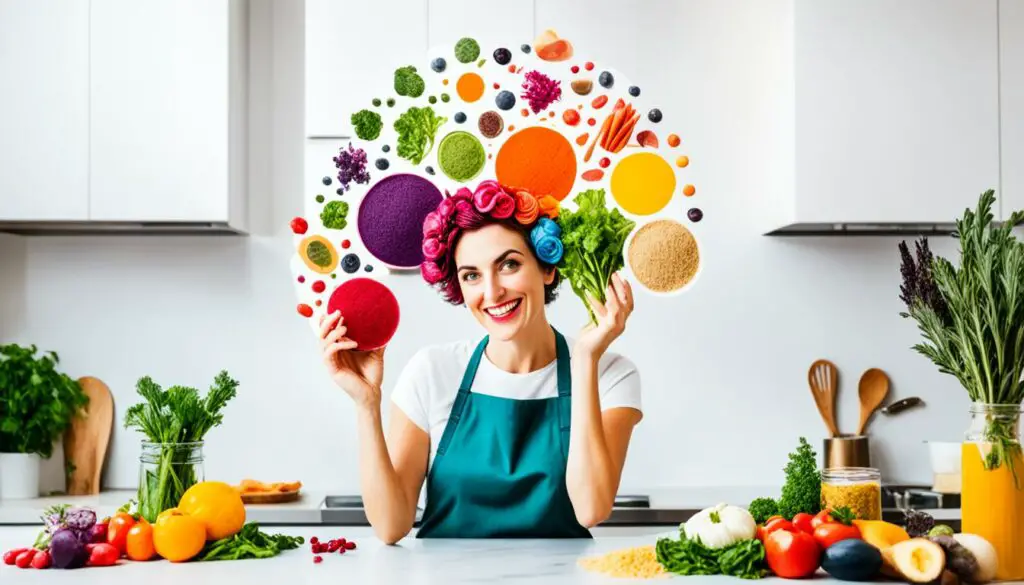
While it’s acceptable to share recipes from other sources on your blog, it’s essential to maintain your own originality. As a blogger, your unique voice and perspective are what set you apart from others in the blogosphere. By creating original content, you not only provide a fresh take on recipes but also establish your credibility and attract a loyal readership.
Originality in blogging goes beyond simply copying and pasting recipes from other websites. It involves adding your personal touch, whether it’s through innovative ingredient combinations, unique cooking techniques, or engaging storytelling. Embrace your creativity and experiment with different flavor profiles, garnishes, or presentation styles to showcase your individuality.
When using shared recipes, consider adding your own spin to make them truly unique. This could involve adapting the recipe to your own taste preferences or dietary restrictions, incorporating local ingredients, or infusing cultural influences. By making these modifications, you not only create a more personalized experience for your readers but also signal your commitment to providing valuable content.
Furthermore, don’t shy away from sharing your own tried-and-true recipes with your audience. Whether it’s a family heirloom passed down through generations or a culinary creation that you’ve perfected over time, these original recipes provide a glimpse into your passion for cooking and offer readers something unique that they won’t find elsewhere.
“Originality is the key to making your blog stand out from the crowd. By infusing your own personality, ideas, and experiences into your content, you create an authentic connection with your readers.” – Jane Smith, Food Blogger
In addition to creating unique blog content, it’s important to engage with your readers and build a community. Encourage them to share their feedback, suggestions, or even their own adaptations of your recipes. This not only fosters a sense of belonging but also adds to the collective creativity and inspiration within your blog.
Providing Variety and Inspiration
Shared recipes can be a valuable addition to your blog, offering variety and inspiration to your readers. They provide an opportunity to explore different cuisines, cooking methods, and flavors that you may not have otherwise discovered. By curating a diverse range of recipes from reputable sources, you become a trusted resource for your audience, leading them on a culinary adventure.
Remember to always attribute and link back to the original source when sharing recipes. This not only respects the efforts of other bloggers but also acknowledges their expertise and helps build a network of like-minded individuals in the blogging community.
Creating Original Content
| Strategies for Creating Original Content | Benefits |
|---|---|
| Develop unique recipe combinations | Stands out from similar recipes |
| Add personal flair through storytelling | Creates emotional connection with readers |
| Experiment with different cooking techniques | Offers distinctive approaches to recipes |
| Showcase local ingredients or cultural influences | Highlights regional or ethnic flavors |
| Share your own original recipes | Builds trust and establishes your expertise |
By maintaining your originality in blogging, you not only provide a unique experience for your readers but also contribute to the overall richness and diversity of the blogging community. So, let your creativity soar, and let your blog be a reflection of your culinary passion and individuality.
For more insights on recipe sharing and maintaining originality, check out this resource.
Conclusion
Sharing others’ recipes on your blog can be a fantastic way to engage with your audience and provide them with diverse culinary experiences. However, it is of utmost importance to navigate recipe sharing on blogs while staying compliant with copyright laws. By understanding and respecting these laws, you can build a successful blog and maintain a positive reputation in the blogging community.
When sharing someone else’s recipe, always give proper attribution to the original source. This not only shows respect for the hard work of other bloggers and content creators but also ensures that you stay compliant with copyright laws. Remember, recipe attribution is essential to avoid plagiarism and legal issues.
Whether you’re sharing recipes on your blog or on social media platforms, always provide a link back to the original recipe. This not only supports the content creator but also ensures that they receive proper credit and traffic for their work. Responsible recipe sharing not only keeps you compliant with copyright laws but also fosters a sense of community and collaboration in the blogging world.
By staying compliant with copyright laws and navigating recipe sharing on blogs responsibly, you can maintain a successful and ethical blog. Remember, sharing others’ recipes is a way to provide variety and inspiration to your readers, but it’s equally important to maintain your own originality and unique perspective in your blogging journey.
FAQ
Can I use other people’s recipes on my blog?
Yes, you can share recipes from other sources on your blog, but it’s important to understand and follow copyright laws to avoid legal issues.
To share others’ recipes legally, you must properly attribute the original source and obtain permission if necessary. Giving credit where credit is due is crucial to avoid plagiarism and maintain a positive reputation.
Do recipes have copyright protection?
While a list of ingredients cannot be copyrighted, the expression of a recipe, including directions and accompanying text, may be subject to copyright protection. It’s important to understand the distinction and use recipes in a way that respects copyright laws.
How can I use recipe photos from other blogs?
When using someone else’s recipe, it’s important to respect the copyright of any accompanying photos. Always check the original source for their photo use policy and obtain permission if required. Proper attribution and linking back to the original recipe are crucial.
Ingredient lists are not subject to copyright protection. You can copy and paste the ingredient list, but it’s important to provide proper attribution and link back to the original recipe for readers to access the full directions.
Can I adapt someone’s recipe and publish it on my blog?
If you wish to adapt a recipe and publish it on your blog, make substantial changes to the original to avoid plagiarism. Clearly indicate that the recipe is an adaptation and give proper credit to the original source.
Avoid sharing full recipes on social media. Instead, provide a link back to the original source. Each social media platform has its own guidelines, such as copying and pasting a link on Facebook, using the pin button on Pinterest, or sharing short blurbs with links on Twitter.
On Facebook, it’s best to copy and paste a link rather than sharing the full recipe. When pinning on Pinterest, use the website’s pin button and avoid copying recipe content into the pin description. Twitter is ideal for short blurbs and link sharing.
Yes, you can share recipes on various social media platforms. The general rule is to provide a link back to the original recipe, respecting the content creator’s rights and giving them proper credit and traffic.
How can I maintain my originality while sharing others’ recipes?
While it’s acceptable to share others’ recipes on your blog, focus on maintaining your own original voice and perspective. Use shared recipes as a way to provide variety and inspiration to your readers while creating unique content.
What is the importance of staying compliant with copyright laws when sharing recipes on blogs?
Staying compliant with copyright laws when sharing recipes on blogs is crucial to avoid legal issues, protect your reputation, and maintain positive relationships within the blogging community.

